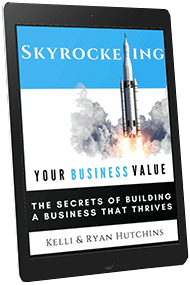
Financing a Partnership Buyout
Financing a partnership buyout can be a tricky situation. By knowing your options and selecting the best fit, both the buyer and the seller can benefit.
There are many ways to structure the financing of your partnership buyout. A few options include lump-sum payments, seller financing, buyouts over time, earn-outs, and lender financing.
Overall, debt financing is more common than equity financing. With debt financing, you remove an owner and borrow money to increase your share of ownership. This type of funding can be more difficult to secure as it doesn’t directly benefit the business. The funding doesn’t go to helping to grow the business or increase profits so many lenders are reluctant to give funds.
With equity financing, you raise capital by selling either part or all of the partner’s interest to private investors. Essentially you exchange one partner for another as you give away ownership. Equity financing is useful in scenarios where the selling partner has the expertise, skills, or connections the business cannot thrive without.
Below we will discuss each of the common financing options. For additional questions, reach out to Peak Business Valuation by scheduling a free consultation.
Lump-Sum Payment:
A lump-sum payment is a one-time upfront payment that is often a large sum of money. This type of financing can be difficult for many small business owners, especially if the valuation of the company is high. Many business owners lack the cash necessary to buy out a partner this way. One of the biggest considerations one should make for this type of financing is the tax impact. A single payment will result in any gain or loss on the sale being recognized in a single tax year.
Seller Financing:
This type of financing is one of the preferred methods and is often easier to negotiate between the buyer and seller. Here the buyer and seller work out an agreement where the buyer makes monthly payments to the seller in exchange for ownership of the company. Often, a down payment is made and a promissory note is signed which outlines the total number of payments that are due overtime. Typically, the time frame for seller financing is 5 -7 years. The promissory note also outlines the consequences of defaulting on the payments and what the interest rate will be.
One of the main advantages of seller financing for a small business owner is that it makes the business more attractive to potential buyers. Many buyers do not have the cash necessary to pay a lump sum and bank loans can be difficult to obtain. Seller financing is often quicker and is less hassle than obtaining funding elsewhere.
To the business owner selling, using this type of financing can lead to a higher purchase price. The seller will also receive dependable cash flow as the payments are spread over several years. This reduces the tax burden since capital gains are spread out rather than in one lump sum.
Buyout Over Time:
This type of seller financing states that the purchasing partner will pay the bought out partner a predetermined amount over time until the seller is fully paid.
Earn-out:
With this type of financing, the buyer has a responsibility to pay the seller, but the agreement may also require the partner to stay with the company or provide consulting during a defined transition time.
Earn-out provisions have several benefits. Requiring the current owner to remain with the company can help smooth the transition. The new owner can learn from the previous owner and gain the ability to run the business. Earn-outs often pay out more if the company continues to remain in strong financial health. Earn-out provisions may have adjustable payments based on the performance of the business. This type of financing protects the purchasing partners and can help smooth the transition to new management.
Lender Financing:
Lender financing has the most attractive terms, but can be difficult to obtain as the money does not directly benefit the company. As such, many lenders simply won’t finance this type of opportunity. If a lender is willing to, approval periods can often take months if you are willing and able to wait.
One of the best lender financing options is through the Small Business Administration (SBA). If your business has a solid operating history, is profitable, and has excellent credit, SBA loans may be a good option.
The SBA backs certain types of loans that allow a business owner to fund partnership buyouts. One type is the 7(a) loan. The design of this loan is to help entrepreneurs start or expand a business. The application and approval process can be rigorous. Requirements may include solid financials, a post-exit strategy, and a business plan moving forward. This process takes some time and may not be the best option if you need funding quickly.
Each of these financing options has various benefits for the buyer and seller. Overall, the best way to finance a partnership buyout is to negotiate an agreement that provides a maximum transaction price for the outgoing partner while reducing risk and giving support to the remaining partner(s).
We at Peak Business Valuation would love to help you with a partnership buyout valuation. We welcome any questions you have. Please reach out by scheduling a free consultation.
Schedule Your Free Consultation Today!
